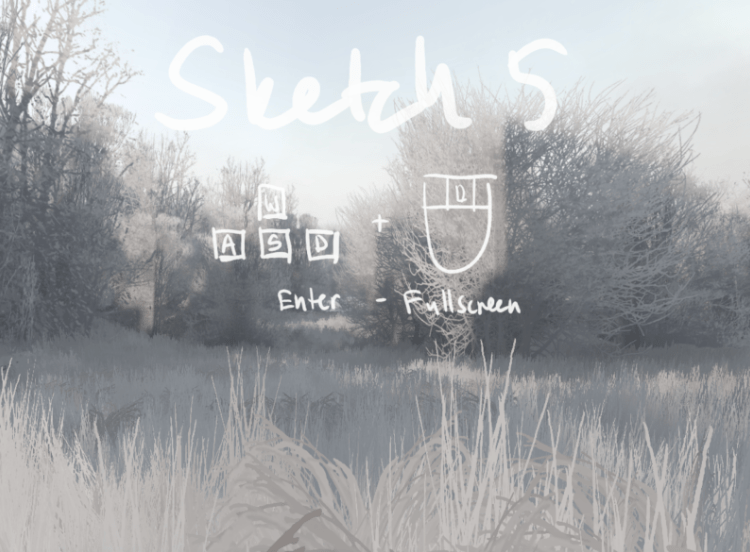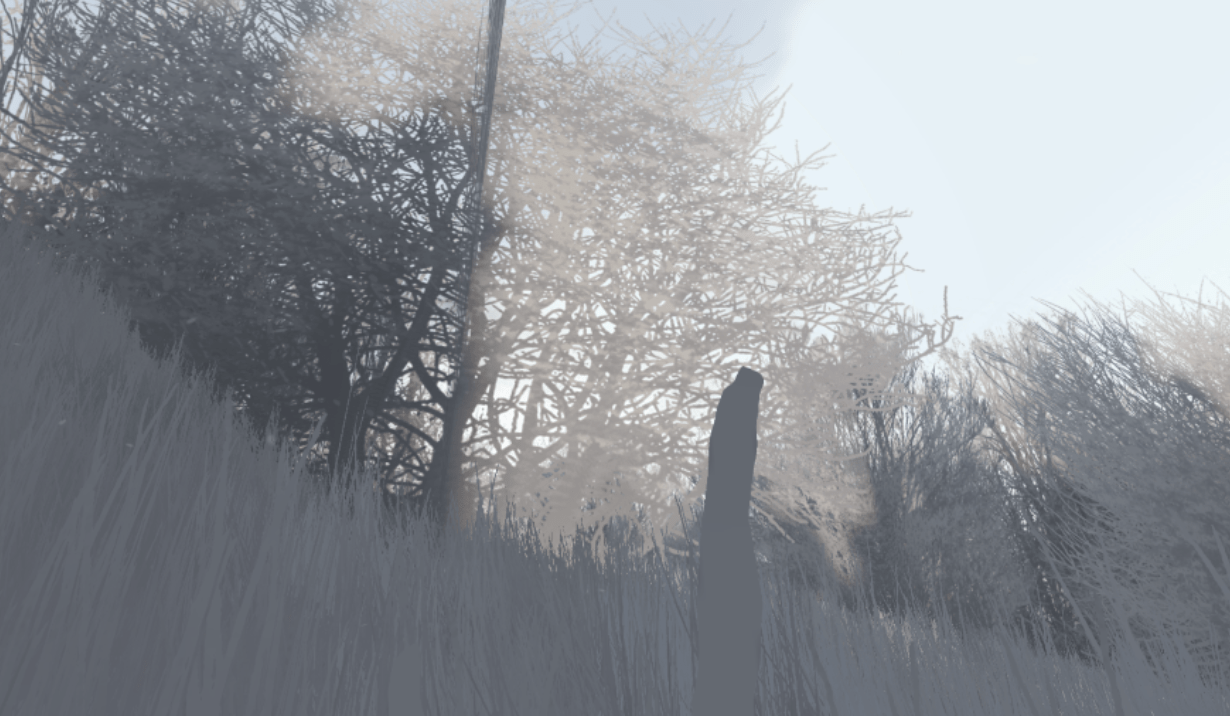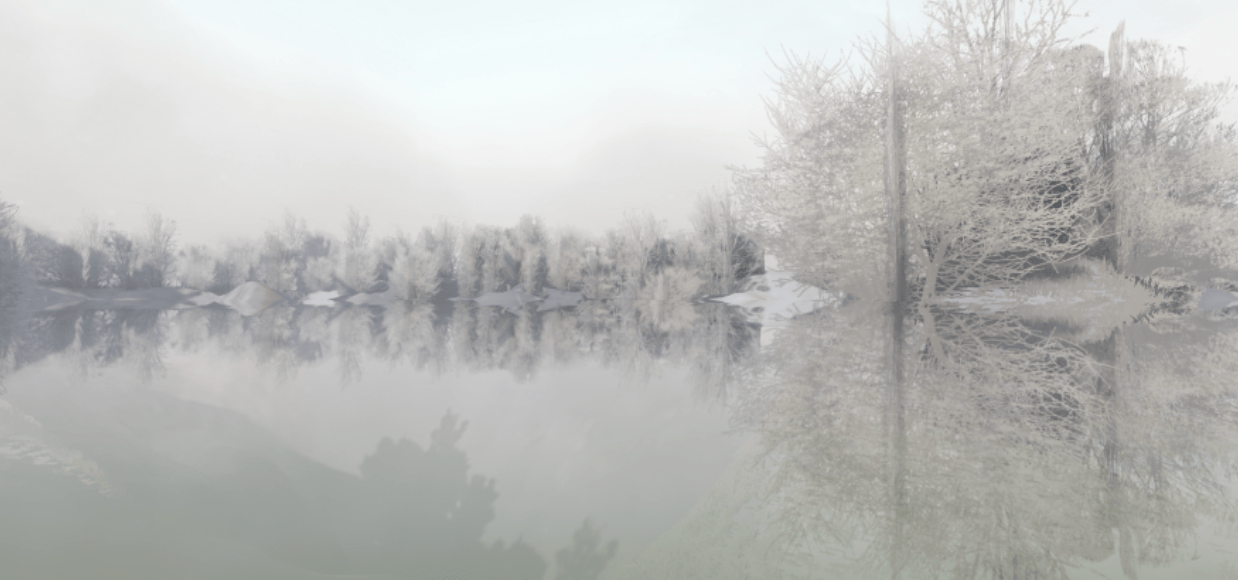This week, I looked at some places/sketches as part of game designer ktch0’s “Places” project. These were accessed online via a desktop web browser at jlv.fi/places/. There are also downloads for both Linux and Windows for some of the locations. According to Places’ website, “Places are small and atmospheric 3D paintings where one can walk around and spend a few minutes.” There are no mature elements to the game, and they are accessible by anyone with a computer with a browser, so the target audience is anyone interested in a relaxing, undirected connection with nature online. People aged 10+ should generally be able to use arrow keys/WASD to navigate these spaces. Blind or low-vision players can still listen to the sounds of walking/navigating the environment, but most of the project is visual. Based on Bartle’s taxonomy of players, Places primarily appeal to people who are “explorers” (the game is self-directed exploration), and less so those who are achievers (there are no awards, or material things to gain)/killers (there are no other players to beat)/socializers (there are no other players or NPCs to socialize with). One could also argue that it still is suitable and enjoyable for socializers if you expand your definition of socialization to include self-socialization and socialization with nature, though.
In Places, unrestrained walking within simple, natural environments allows the user to explore by themselves. A lack of a traditional storyline allows for this self-guided exploration to tell a story of peacefulness, connection, and nature.
Let’s begin by looking at the basic mechanics of the game. Upon loading a scene, you are presented with the controls. Notably, there are no options to interact with the environment (other than walking with WASD / panning with the mouse) (critique: I discovered you can also press space to jump, maybe this could be noted explicitly, though). Unlike many other games, you cannot pick up items, shoot anything, or chat with other players (Places are single-player endeavors). Oftentimes, game designers consider what mechanics and formal elements are present in a game. I believe that it’s also important to look at which ones are not present. The image below shows how simple and easy it is to learn how to navigate Places.

Given the simple mechanics (and lack of more complex ones), the dynamic of the game is that the user spends time exploring the peaceful environment around them. When I played, I walked through grasses, through water (critique: there could have been a little more movement of water when the player is walking through it), and up hills (see screenshots from various Places). I could go anywhere I wanted, outside of the bounding box of the map/world itself.


In the water in Places.
Had I been preoccupied with another mission, such as finding an item or tracking down an enemy, I wouldn’t have spent as much time exploring the landscape itself. I heard the noise of water and the rustling of leaves and grass. In some Places, I watched as my character’s vision was obscured by tall reeds and trees, feeling truly connected to nature in a way that is incredibly rare to feel online. I also reflected upon my self within the game—how tall was I? How did I navigate the environment? Ultimately, this dynamic is connected with aesthetics of sensation (enjoying the audio/visual effects), discovery (getting to walk around the world), and submission (playing the game just for fun). I would argue that there is also an aesthetic of narrative. Although not explicitly defined, it’s one that the player gets to determine for themselves. Are you an animal, walking through the woods? A hiker, exploring off-trail? Or are you nature itself? The story is entirely in your own mind. In this way, the narrative type of the game is emergent because you get to tell/discover the story. Regardless, the game’s story represents a peaceful connection between player and nature.
Throughout this self-guided story, I was also struck by the vastness of the worlds and how they were simultaneously both empty and full (see below screenshot). They were empty in that there were no other players or things to directly interact with. They were full in that every single inch of the maps were filled with nature: trees, plants, water, rocks, etc for the player to explore, helping them satisfy information-based psychogenic needs. While exploring, you could hear the ripples or water or the wind blowing through grass. In relation to this world, the comparatively small size of the played character (and the lack of ability to see yourself) impresses upon the player how they connected with nature.

Under self-determination theory, there is extreme autonomy within Places—everything is up to you, and there’s nothing you have to do. Competence is also easily achieved (there are not a lot of skills to master). Relatedness is also easily achieved via a connection with nature (as opposed to with NPCs or other players). Accordingly, there is motivation to play the game. That said, I think competence is the weakest link here, especially as there is not much of a competence curve—there’s not a lot else to keep getting “better” at within this game (possible critique). Places can be a peaceful escape to nature from the hustle and bustle of everyday life—and that alone may be motivation enough to keep players coming back.
In summary, Places—through its simple design and mechanics—allows the player to tell an emergent story involving connection to nature.


